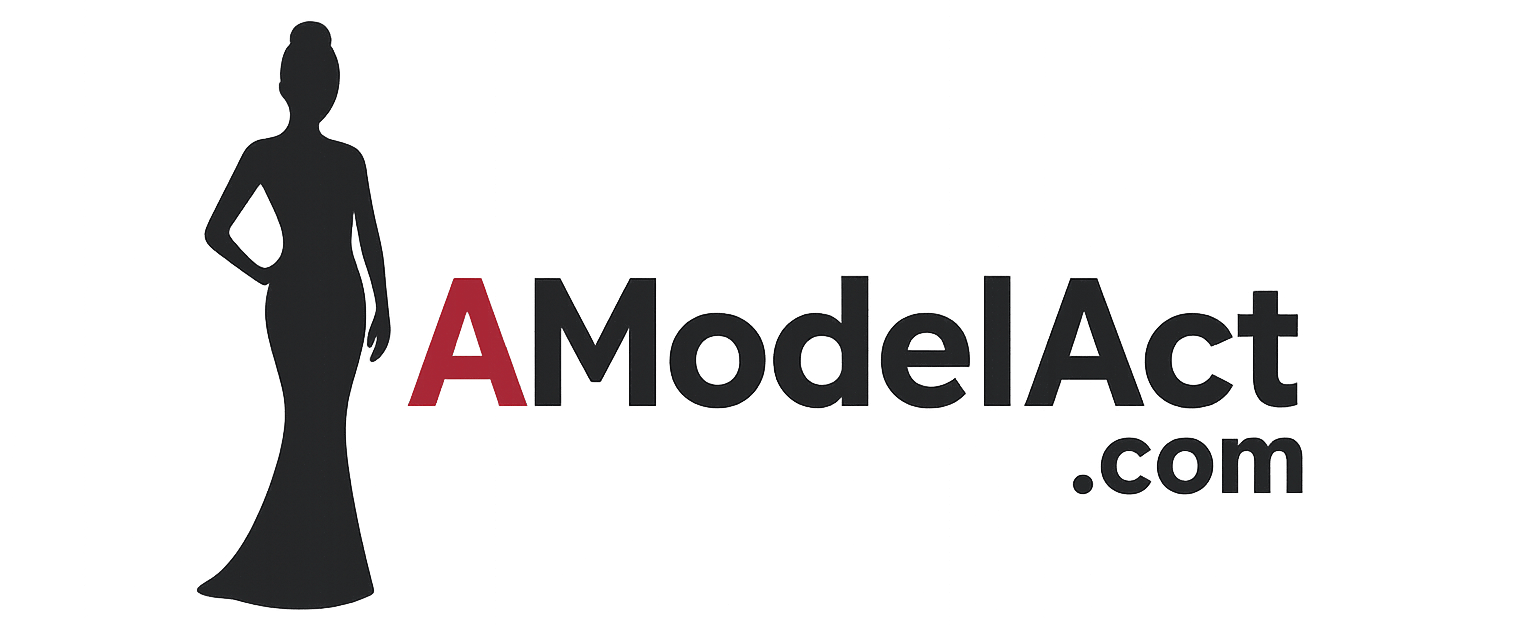The modeling industry, long steeped in tradition and polished presentation, is undergoing a revolutionary transformation. At the heart of this shift is technology, reshaping how models present themselves, communicate their brand, and get noticed by scouts, agents, and brands. While physical portfolios and composite cards still hold nostalgic value, today’s successful models are those who embrace digital tools, platforms, and innovations to stay competitive and relevant. In this article, I’ll dive into how technology is reshaping modeling portfolios and how you can take advantage of these new tools to boost your modeling career.
The Digital Portfolio Has Replaced the Printed Book
Gone are the days when a model had to carry a leather-bound portfolio from casting to casting. Today, digital portfolios dominate the scene, and for good reason. They are accessible, shareable, and easy to update, allowing models to remain agile in a fast-moving industry.
Having a digital portfolio means you can showcase your work on your own terms. Whether it’s through a personal website, platforms like Model Mayhem or The Hub, or even social media channels like Instagram, a digital-first approach ensures that your portfolio is always visible to potential collaborators worldwide. Agencies and clients love this format because it allows them to scout talent at their convenience without scheduling an in-person review.
Social Media as an Extension of Your Portfolio
Instagram, TikTok, and even YouTube are now integral to a model’s portfolio. These platforms offer more than just visibility, they show personality, versatility, and how you interact with your audience. More than ever, clients want to see how a model can move, speak, and engage, not just pose for still images.
The curated grid of an Instagram account can highlight the depth of your experience, editorials, campaigns, behind-the-scenes footage, and even everyday snapshots of your modeling lifestyle. TikTok offers a dynamic way to showcase video reels, transitions between looks, and creative concepts that can grab the attention of both fans and professionals.
A model’s social media presence often becomes a part of the scouting and selection process. If your online presence reflects a strong and consistent brand, clients are more likely to consider you for work. It’s your chance to show off not only your look but also your professionalism, reliability, and audience appeal.
Websites and Personal Branding
Having your own website is now a standard professional move. It’s where your digital portfolio can live independently of any social media platform or agency. A good modeling website should include:
- A clean homepage with a short introduction
- High-resolution images and video content
- Stats (height, measurements, etc.)
- A downloadable comp card or press kit
- Contact details or a booking form
This centralized hub reinforces your credibility and gives you full control over how you are represented. You can even incorporate your blog, collaborations, or personal projects, anything that rounds out your story and your brand.
The Rise of Video Content and Digital Comp Cards
While photos remain essential, video content is rising fast. Short reels that show you walking, posing, and interacting with the camera give clients a better sense of how you move and express emotion. These can be uploaded directly to your digital portfolio or embedded from platforms like Vimeo or YouTube.
Another major change is the digital comp card. Once handed out physically, comp cards are now created as sleek PDFs or links, easily shared with scouts and casting directors. Some models go even further and create interactive lookbooks or augmented reality features that allow a viewer to rotate or zoom in on different images.
Virtual and Augmented Reality Modeling
With the growing interest in virtual fashion shows and digital clothing, modeling is no longer confined to the physical world. Tech-forward agencies are beginning to experiment with augmented reality (AR) and virtual reality (VR) modeling environments. This opens doors for models to work on campaigns without ever stepping into a studio.
For example, 3D scanning can create hyper-realistic digital avatars of models, allowing them to “walk” virtual runways or pose in digital outfits for e-commerce platforms. These futuristic portfolios don’t just show images, they offer immersive experiences. As the metaverse continues to evolve, these technologies could become a standard part of a model’s presentation toolkit.
AI Tools for Portfolio Curation and Optimization
Artificial intelligence is helping models curate and optimize their portfolios. Apps and platforms can now analyze your uploaded images to recommend which photos best fit specific brand categories, like commercial, editorial, fitness, or high fashion. These tools can also advise on composition, lighting, or even facial expressions that statistically perform better.
AI-assisted tools also help with retouching, layout formatting, and facial recognition indexing, which is especially useful for organizing large collections of images over time. This level of automation saves time and ensures that your portfolio always looks professional and competitive.
Collaboration Platforms and Cloud Storage
Technology makes collaboration easier, especially in our increasingly remote-friendly world. Shared folders on platforms like Dropbox, Google Drive, or WeTransfer allow photographers, makeup artists, and stylists to upload edited shots instantly.
Additionally, platforms like Milanote or Notion can help you organize your looks, plan shoots, and visualize mood boards for upcoming work. The ability to access your entire visual and strategic toolkit from anywhere is a game-changer, especially when you’re traveling for work or moving between cities.
Real-Time Feedback and Analytics
Another significant advantage of technology is access to real-time feedback. Whether it’s engagement analytics from social media or insights from a portfolio-sharing platform, knowing which photos generate the most buzz can influence what you include in your official portfolio.
Some modeling-specific platforms offer metrics like image views, save rates, or click-throughs on comp cards. This data can inform decisions about your presentation style and image selection, helping you tailor your portfolio to the needs and preferences of clients.
Apps That Help You Track and Plan Your Career
There’s now a wide range of mobile apps designed for models. These tools can help you:
- Track casting schedules
- Send e-sign contracts
- Update measurements and images
- Schedule social media posts
- Log expenses or invoices
Having these capabilities in your pocket gives you more control over your modeling business. You become your own brand manager, booking agent, and publicist all in one.
The Need for Consistent Updates and Maintenance
With all this technology, one of the most important habits a model must build is regular portfolio maintenance. Because clients can access your digital presentation at any time, it must always reflect your most recent, and best, work. Outdated images or incorrect stats can lead to missed opportunities.
Set reminders every few months to:
- Swap out older photos for newer, better ones
- Add recent campaigns, test shoots, or tearsheets
- Update measurements, especially if they’ve changed
- Check and correct broken links on your site or social pages
Just like your resume in a corporate job, your modeling portfolio is a living document that evolves with your career.
The Democratization of Opportunity
Technology is also breaking down barriers to entry. Before, models had to live in big fashion capitals like New York, Paris, or Milan to be discovered. Now, a model living in a small town with a strong online presence and killer portfolio can land campaigns or agency contracts without ever stepping on a plane.
Virtual castings, online open calls, and digital submissions are making it easier for new faces to get a foot in the door. This shift is expanding diversity in the modeling industry, not just in ethnicity and body type, but also in geography, age, and personal style.
The Blurring Line Between Models and Creators
Technology has transformed how we define a model. Today, models are expected to be more than just faces, they’re creators, storytellers, and influencers. Whether it’s producing video content, hosting livestreams, or launching capsule collections, models are using their platforms to do much more than pose.
In response, portfolios are becoming multimedia experiences. Instead of a static album of photos, a model’s digital presence is now a full narrative, who you are, what you represent, and how you bring creative value to a brand.
Final Thoughts
The modeling world is changing fast, and technology is at the center of this evolution. From AI-enhanced comp cards and video reels to Instagram highlights and personal websites, the modern model must embrace digital tools to stay competitive and discoverable.
Your portfolio isn’t just a book anymore, it’s a dynamic, living, multi-platform expression of your talent. Whether you’re just starting out or already established, the key to longevity is not just keeping up with the times, but staying ahead of them.
Embrace the tools, learn the platforms, and let your portfolio evolve with you. The digital age isn’t replacing models, it’s empowering them.

